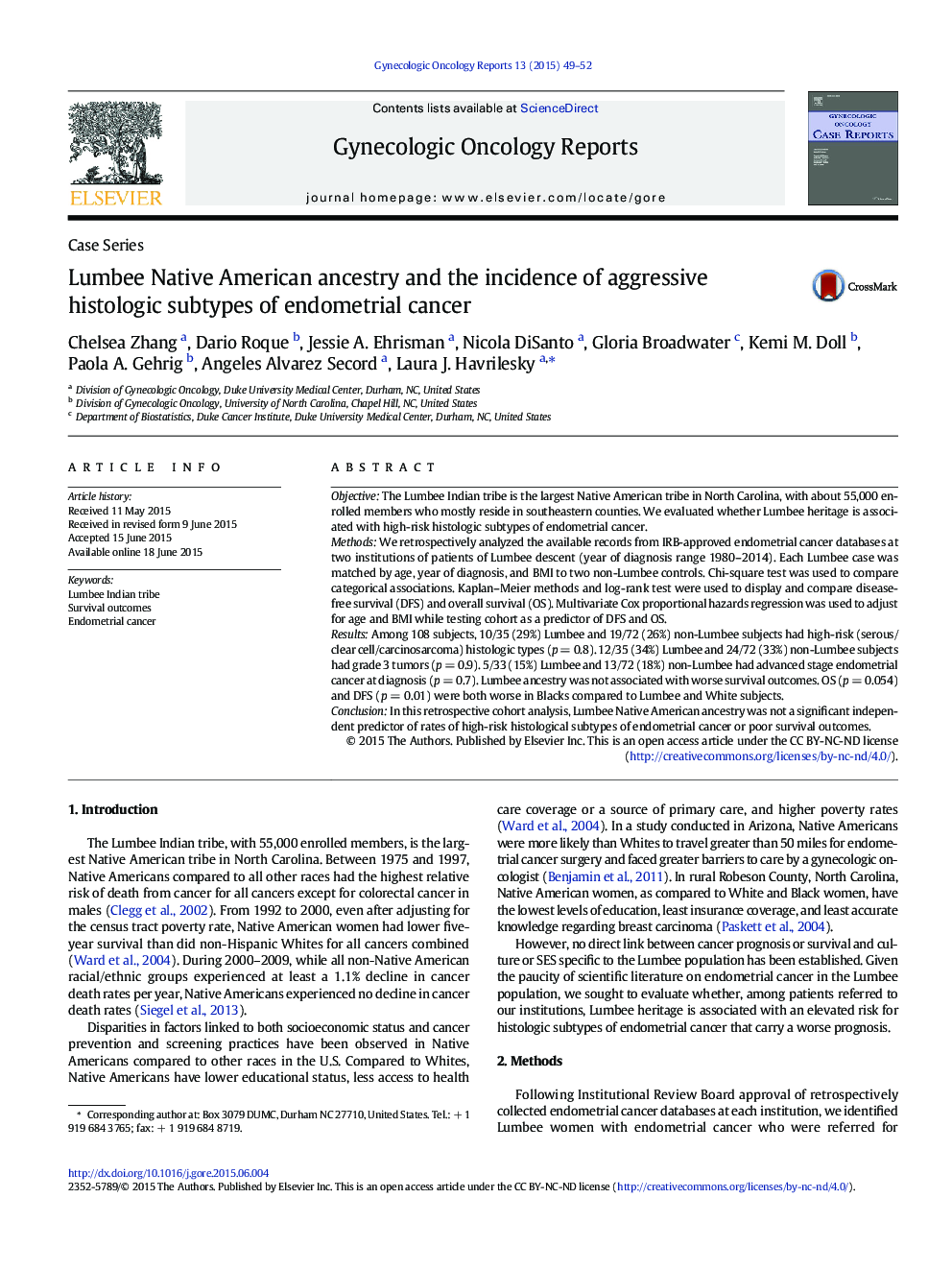| Article ID | Journal | Published Year | Pages | File Type |
|---|---|---|---|---|
| 3951160 | Gynecologic Oncology Reports | 2015 | 4 Pages |
•In a retrospective cohort study, women with endometrial cancer of Lumbee Native American ancestry were matched to non-Native American controls.•Women with Native American ancestry did not have a significantly higher incidence of high-risk histologic type when compared to controls.•Disease-free survival and overall survival were lower in Black subjects compared to White and Native American subjects.
ObjectiveThe Lumbee Indian tribe is the largest Native American tribe in North Carolina, with about 55,000 enrolled members who mostly reside in southeastern counties. We evaluated whether Lumbee heritage is associated with high-risk histologic subtypes of endometrial cancer.MethodsWe retrospectively analyzed the available records from IRB-approved endometrial cancer databases at two institutions of patients of Lumbee descent (year of diagnosis range 1980–2014). Each Lumbee case was matched by age, year of diagnosis, and BMI to two non-Lumbee controls. Chi-square test was used to compare categorical associations. Kaplan–Meier methods and log-rank test were used to display and compare disease-free survival (DFS) and overall survival (OS). Multivariate Cox proportional hazards regression was used to adjust for age and BMI while testing cohort as a predictor of DFS and OS.ResultsAmong 108 subjects, 10/35 (29%) Lumbee and 19/72 (26%) non-Lumbee subjects had high-risk (serous/clear cell/carcinosarcoma) histologic types (p = 0.8). 12/35 (34%) Lumbee and 24/72 (33%) non-Lumbee subjects had grade 3 tumors (p = 0.9). 5/33 (15%) Lumbee and 13/72 (18%) non-Lumbee had advanced stage endometrial cancer at diagnosis (p = 0.7). Lumbee ancestry was not associated with worse survival outcomes. OS (p = 0.054) and DFS (p = 0.01) were both worse in Blacks compared to Lumbee and White subjects.ConclusionIn this retrospective cohort analysis, Lumbee Native American ancestry was not a significant independent predictor of rates of high-risk histological subtypes of endometrial cancer or poor survival outcomes.
